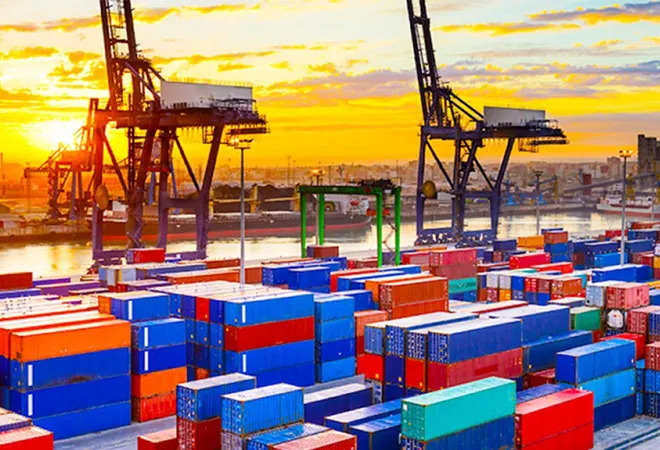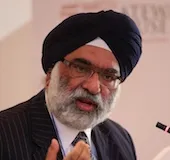
It has been two years since the Africa Continental FTA (AfCFTA) came into effect. Great expectations were attached to it, as it fulfilled a major goal for the unification of Africa as laid out in
Agenda 2063. The FTA is the largest of its kind since the World Trade Organisation (WTO) was formed. It covers 55 countries in Africa with a population of about 1.3 billion and a combined GDP of US $3.4 trillion
By 1 January 2023, 44 of 55 member states deposited their instruments of
ratification with the
AUC. Over two-thirds of member states are now parties to the AfCFTA Agreement.
Somalia’s cabinet approval is pending.
Eritrea is the only country not to join AfCFTA so far.
Its initial phase took effect in January 2021. It is intended to gradually diminish tariffs on 90 percent of goods traded within Africa, and the reduction of trade barriers in services is also anticipated.
A World Bank report indicated that income levels could be enhanced by 7 percent up to US$450 billion by 2035, if the FTA was implemented. This was expected to reduce extreme poverty in Africa by 40 million people.
FDI is now the most important element to supplant the dependence of Africa on aid and grants.
A new World Bank study done in association with the AfCFTA Secretariat indicates that other benefits which could accrue would include FDI, both intra- African and from without. This is due to the regional markets created by the AfCFTA. FDI is now the most important element to supplant the dependence of Africa on aid and grants. It is important because it will reduce debt stress, as
accumulated debts are stretching African economies, particularly since the pandemic coerced them into domestic expenditure in a different way. FDI is expected to bring new capital, fresh technology, and additional skills which would raise the standard of living and reduce African dependence on primary and commodity exports. Real incomes may rise to about 8 percent in 2035, reduce poverty, and create a bigger middle class.
The World Bank report creates a model, indicating possibilities of improvements if the FTA was expanded as per plan. For this, harmonisation of policies on investment competition, e-commerce and intellectual property are imperative. Integration in these sectors would generate efficient markets with increased competitiveness. This additional expansion could bring enhanced gains of 9 percent by 2035 and reduce extreme poverty by a further 50 million. However, these are guidelines for policymakers and what is to be seen is how much has the AfCFTA actually achieved in two years.
AfCFTA’s progress
The AfCFTA so far indicates a large amount of optimism but a far more realistic sense of achievement. Trade restrictions among African countries exist in large measure and need to be handled to expand intra-African trade. Much of the blame has been on the COVID pandemic impacting the integration goals of the AfCFTA.
Some analysts believe that the ‘lethargic reactions of African leaders towards opening up their borders and liberalising trade leaves much to be desired’.
Three major issues have been documented, which seem to bedevil, the AfCFTA in its initial phase.
First, the negotiation on the Rules of Origin seemed endless. Several members were unwilling to ratify all the articles of agreement. Many African countries earn most of their trade revenue from exports to non-African countries. They were persuaded that the regional and domestic trade expansion could compensate for that. Certainly, the impact of the pandemic made countries focus on strengthening existing trade mechanisms to generate more revenue. In 2022,
rules of origin were resolved for
87.7 percent of the goods covered by AfCFTA, including about 3,800 tariff lines
Trade restrictions among African countries exist in large measure and need to be handled to expand intra-African trade.
Secondly, the AfCFTA suffers as does the African Union (AU) in general, from a lack of popular perception about its advantages across the board. African businesses in particular are not fully aware about the advantages of the AfCFTA. Protectionist policies followed by African countries have taken time to reduce. Moreover, persuading them about the advantages of the FTA and refocusing from exports to Europe for instance, to their neighbours, have taken much more time than anticipated.
A study by the Centre for the Study of Economies of Africa in Nigeria. one of the more anxious large economies in Africa, indicated that more than 60 percent of Nigeria's entrepreneurs were unaware of the FTA and its benefits. Greater investment in making businesses aware of the advantages of the AfCFTA is required, as pointed out by the
Africa CEO Trade Report 2022.
Thirdly, customs infrastructure to implement the AfCFTA obligations are slow. A few countries have the infrastructure and systemic capabilities for trade facilitation as required by the AfCFTA indicators.
The Guided Trade Initiative (GTI)
Efforts among the willing have been made through the
AfCFTA Guided Trade Initiative. The start of the FTA on 1 January 2021, was on the basis of validated and reciprocal tariffs schedules. Provisional tariffs schedules were adopted by the seventh meeting of the AfCFTA Council of Ministers on 10 October 2021. This provided a legal basis for the members who had provided their tariff schedules to the Secretariat as per the agreed modalities for preferential trade among themselves. This decision of the Council of Ministers was then approved by the Assembly of heads of state in February 2022.
Given the reasons enumerated above, substantive trade had not really happened under the FTA. To find solutions and encourage greater trade, an AfCFTA initiative on guided trade was introduced at the ninth meeting of the ministers in July 2022.
This GTI aims to obtain correlation among businesses across regions to identify products which could be traded among interested parties within the inclusive member states, utilising the facilitation of their national AfCFTA implementation committees.
The specific objectives of the AfCFTA Guided Trade Initiative are:
- To generate substantial commerce under the AfCFTA;
- To check the operational, institutional, legal and trade policy aspects of the AfCFTA; and
- to transmit a coherent message to the African economic players that the AfCFTA was doing business.
The GTI obtained participation of eight member states: Cameroon, Egypt, Ghana, Kenya, Mauritius, Rwanda, Tanzania, and Tunisia. They cover all five regions of Africa. The products selected for trade under the AfCFTA GTI include: ceramic tiles; batteries, tea, coffee, processed meat products, corn starch, sugar, pasta, glucose syrup, dried fruits, and sisal fibre, amongst others, in accordance with the AfCFTA emphasis on value chain development. A multipliers effect with economic fallout for SMEs in particular is targeted.
At least 96 products will be traded under the GTI and the initiative will be reviewed annually to expand the list of countries.
Setting up of PAPSS
Afreximbank has partnered with the African Continental Free Trade Area (AfCFTA) Secretariat to launch the
Pan-African Payments and Settlement Systems (PAPSS), a platform that
facilitates instant cross-border payments in local currencies between countries. PAPSS was adopted in July 2019 by the AU heads of state to support the AfCFTA. An estimated
80 percent of intra-African payments are routed through the United States (US) or Europe, with high transfer and compliance costs.
PAPSS works with the systems of central banks and with the systems of commercial banks. Other banks, fintech, and payment services are indirect participants. Payments are made and settled in local currencies at all ends of the trade deals. This removes routing through hard currencies to complete regional trade. National and sub-regional payment systems lack interoperability. An integration of Africa financially is the objective. That requires an understanding of the value that this brings to intra-African trade.
The economy requires easier trade movement across countries through tariff reductions, standardisation of the logistics industry, and infrastructure projects necessitated by the increased freight requirements.
Some other aspects will facilitate AfCFTA. The
manufacturing sector needs a fillip as that will benefit more from the AfCFTA. This also requires skilling. The
logistics need upgrading to facilitate trade and this requires huge funding. There are several stakeholders in cross-border trade: shippers, transporters, drivers, banks, ports, border officials, customs inspectors, and tax authorities. They operate individually, with little centralisation and restricted view of an items total value chain and transportation and storage. The economy requires easier trade movement across countries through tariff reductions, standardisation of the logistics industry, and infrastructure projects necessitated by the increased freight requirements.
The free movement of goods and services and the free movement of people are integral to the benefits of intra-African trade. The role of
the AU’s free movement protocol has received lesser attention than the AfCFTA in facilitating labour mobility. The Protocol to the Treaty Establishing the African Economic Community relating to Free Movement of Persons, Right of Residence and Right of Establishment (AU-FMP) is signed only by 33 countries and ratified by four, while it needs ratification by 15 countries to enter into force.
By late 2022, things had further progressed. Phase I negotiations on trade in goods and services are complete. Phase II, which includes the protocols on investment, intellectual property, and competition, is underway. Phase III will include an e-commerce protocol. The Protocol on Investment which concluded in October 2022 will be adopted by the assembly at its next session scheduled for February 2023.
This is indeed a proud, even though tentative, achievement for Africa, as the Protocol manifests a common African position on important issues of governance of investment, which are crucial to new FDI inflows. AfCFTA is learning to breathe well.
The views expressed above belong to the author(s). ORF research and analyses now available on Telegram! Click here to access our curated content — blogs, longforms and interviews.



 It has been two years since the Africa Continental FTA (AfCFTA) came into effect. Great expectations were attached to it, as it fulfilled a major goal for the unification of Africa as laid out in
It has been two years since the Africa Continental FTA (AfCFTA) came into effect. Great expectations were attached to it, as it fulfilled a major goal for the unification of Africa as laid out in  PREV
PREV


